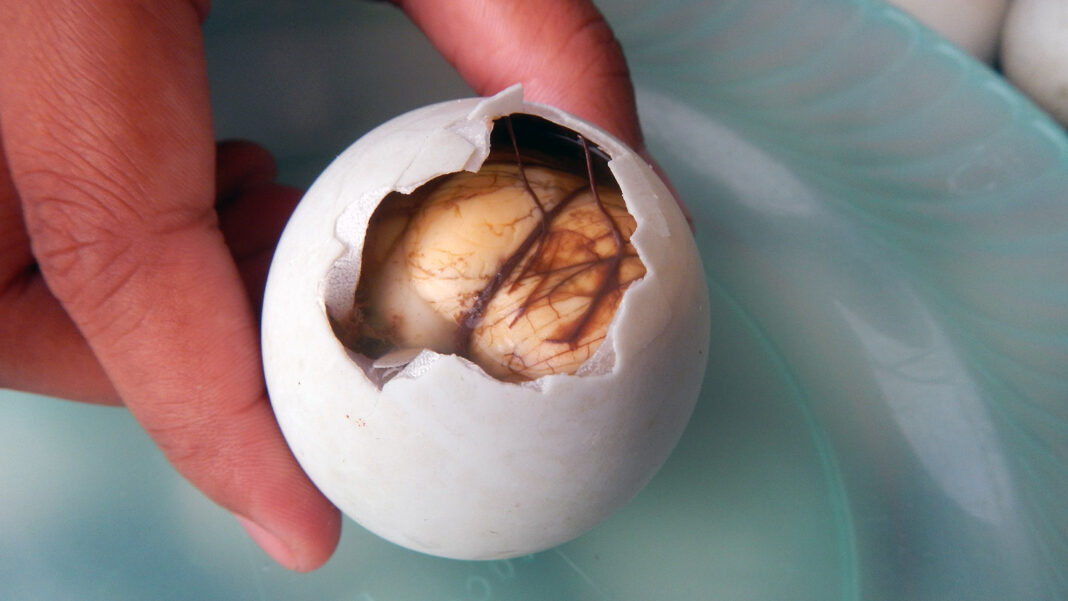One of the first unusual foods to become popular in the Philippines was balut. Balut has been around for about 200 years and was influenced by Chinese culture. What was formerly regarded as a fine dish is now relished with a cool lager. It important to include in the Philippines as ice cream on a hot summer day or ketchup on a hot dog. A, person might not react the same way to a balut as they would to a hot dog when they first see one. Saying “no, thank you” is simple if you don’t comprehend the culture in which it was raised.
Balut is more than simply a delicacy in the Philippines; it is a way of life. In the 1950s, the Pateros municipality had some 400,000 ducks laying the eggs that would eventually become balut, the area’s leading industry. But how precisely does a duck relate to balut? What makes it so cherished in Filipino culture? Let’s begin piercing the balut’s shell and plunge headfirst into the action.
What is balut?
In addition to being a common street snack in the Philippines, balut is also well-liked in Southeast Asian nations like Vietnam, where it is known as hot vit lon, Thailand, China, Malaysia, and others. Balut is simply a fertilized duck egg, and there is no inventive way to explain it other than to state the obvious. Yes, it is a duck egg that has spent a particular amount of time being incubated at 104 degrees Fahrenheit. For balut, the fertilizations period lasts between 16 and 20 days. This signifies that the embryo within this fertilized duck egg is roughly a week away from hatching. The embryo will have feathers and a beak at this stage of development, if you can bear to imagine it.
How do you eat balut?
Those brave enough to take a balut vendor up on this Filipino delicacy will notice that the egg, when served, is warm. Balut is prepared similar to that of a hard-boiled egg except it is not cooled before serving. Instead, the fertilized duck egg is placed in boiling water for 20-30 minutes and eaten as soon as it reaches the right consistency. Perhaps that’s so no one has time to think about what they’re consuming and change their mind.
Balut is typically seasoned with salt, vinegar, or soy sauce in the Philippines, but if you travel to countries like Vietnam, you’ll find other ways to spice things up. Here, balut is seasoned with salt, pepper, and Vietnamese coriander, a herb that tastes a lot like cilantro and is known as spicy vit lon in Vietnam. Of course, the seasonings are added after the egg has been cracked and peeled. Which one do you believe would make it more difficult to tell that you are consuming a fertilized duck egg?
Also Read – Is an egg a vegetarian or non-vegetarian?
Balut kind of tastes like chicken
It makes sense that there would be various flavors throughout the entire balut meal given all the components that emerge after the shell is shattered. The fluid that emerges once the egg is cracked appears to have a consistent flavor. It is described as a meaty soup by one member and as watery chicken broth by the other. The first part seems to be very simple. The egg yolk, which has been characterized as “fluffy and creamy… pudding-like,” follows the liquid. Some others agree, stating it tastes “like custard.” Although the next portion doesn’t look that horrible, it can make your skin crawl.
There are conflicting opinions about the texture of the genuine duck. While some claim that the flesh is soft and melts in your mouth as it is swallowed, others strongly disagree. When Kristine Subido was a child in the Philippines, she recalls not liking balut. Before giving it another try, she avoided it for more than 15 years. She then complained saying that “there’s a little bit of a crack and crunch while you’re eating it.” The beak, foot, and bones are what you can hear breaking and crunching. Now, does your skin start to itch?
Also Read – What’s the Weird White String in Raw Eggs?



